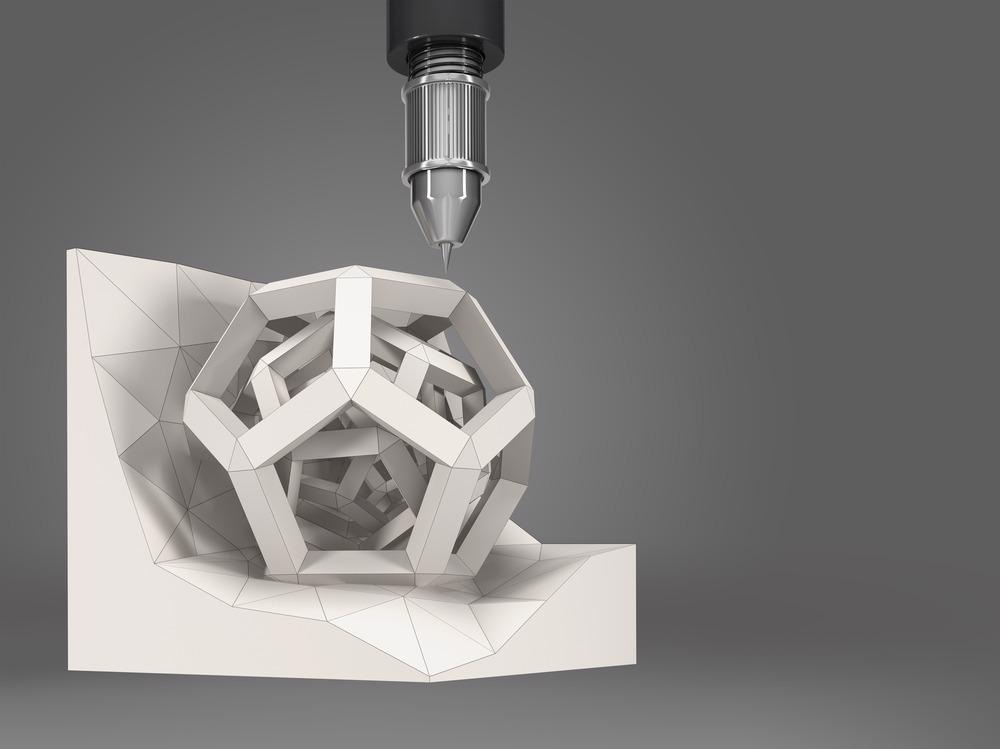 By Surbhi JainReviewed by Susha Cheriyedath, M.Sc.May 12 2022
By Surbhi JainReviewed by Susha Cheriyedath, M.Sc.May 12 2022In a review recently published in the journal Additive Manufacturing, researchers discussed the recent development in liquid crystals that can be photopolymerized for additive manufacturing.

Study: Photopolymerisable liquid crystals for additive manufacturing. Image Credit: Iaremenko Sergii/Shutterstock.com
Background
Although other flat panel display (FDP) technologies, such as organic light-emitting diodes (OLEDs), are now well-established in the FDP marketplace and are slowly taking market share from LCDs, when it comes to liquid crystals it is almost impossible not to refer to liquid crystal displays (LCDs), which represent the dominant technology in the FDP industry. In recent years, many unique liquid crystalline compounds have been developed for usage as organic semiconductors in OLEDs.
Liquid crystal elastomers (LCEs), a well-known family of stimulus-responsive polymers, have also been made with reactive mesogens. Reactive mesogens that are photopolymerisable rather than thermally polymerizable are typically used in the manufacture of solution-processed OLEDs and other RM applications.
The commercial liquid crystal phenyl-ester diacrylates typically utilized in 4D printing, such as reactive mesogen 82 (RM82) and reactive mesogen 257 (RM257), have high glass transition temperatures and clearing points. To lower the RM's liquid crystal phase transition temperatures, tiny quantities of n-butylamine or thiol are added. Unfortunately, when more materials are introduced to the printing system, the parameter control for the fabrication process becomes more complicated.
About the Study
In this study, the authors discussed the novel applications of liquid crystals in advanced additive manufacturing, namely the 3D/4D printing of reactive mesogens and subsequent polymerization to construct anisotropic polymer networks. The primary focus was on the issues of synthesis and application of new liquid crystalline materials in additive manufacturing 3D/4D printing.
The researchers demonstrated how the analysis of effective design and development strategies for the synthesis of novel liquid crystals for flat panel displays inspired the development of novel photopolymerisable liquid crystals for additive manufacturing. The review was designed to motivate chemists who have little or no experience with liquid crystals, as well as liquid crystal chemists, to design and synthesize new liquid crystals for 3D/4D printing.
The team looked at the design parameters for the synthesis of novel RMs from the standpoint of molecular structures and mesophase transitions, which were better suited for 4D printing. Its purpose was to provide some direction for 3D/4D printing researchers with limited liquid crystal knowledge in order to assist them in designing and synthesizing RMs with the necessary structures and mesophase transition temperatures for optimum 4D printing applications.
Observations
One of the studies reported that when dropped from a height of 50 cm onto the developed LCE foam, the egg was protected from cracking, unlike the elastomeric foam. Digital light-processing (DLP) printing LCEs based on RM82 and RM257 for self-sensing artificial muscles with high specific work capacity (63 J/kg) and energy density (0.18 MJ/m3) were reported by Robert F. Shepherd's group at Cornell University. The six laminated LCE films had exceptional lifting forces of almost 20 J/kg which was as much as 2500 times the mechanical system's weight, which could open up new applications in aerospace and other fields that needed strong mechanical qualities. The oligomers RM20-RM22 had a nematic phase with clearing points (N-I) ranging from 38 to 170 °C. The value of the macroscopic order parameter, S, in terms of nematic mesophases, was reported to be between 0.4 and 0.7.
Along with solids, liquids, and gases, liquid crystals were frequently regarded as the fourth state of matter. Because liquid crystals were utilized in LCDs, it was reported that one out of every 10 novel synthesized compounds were a liquid crystal. Liquid crystals, also known as mesogens, had a diverse spectrum of ordered mesophases with anisotropic physical features including magnetic, optical, and dielectric anisotropy. Liquid crystals were employed in a wide range of non-LCD applications due to their extremely anisotropic features and propensity to self-organize on surfaces. Photochromics, optical retarders, pressure-sensitive paints, and optical correction films were examples of these applications.
Solution-fabricated (OLEDs), organic photovoltaic devices (OPVs), and organic field-effect transistors (OFETs) were developed by highly crosslinked, anisotropic polymer networks produced from photopolymerisable liquid crystals, known as RMs.
Conclusions
In conclusion, this study summarized the properties of liquid crystal molecular architectures and mesophases, as well as the development of structural photopolymerisable liquid crystals and their applications in additive manufacturing. While there has been efficient modification and design of liquid crystalline compounds in the field corresponding to flat panel displays, there have been few efforts to optimize new liquid crystal structures specifically for additive manufacturing. The present obstacles for the 4D printing liquid crystals having high mesophase transition temperatures and low strength modulus were also discussed.
The authors believe that further optimization of photopolymerizable liquid crystal molecular structures will accelerate additive manufacturing development, broaden the possibilities for novel 3D/4D printing applications, and create new markets for these sophisticated functional materials in the future.
More from AZoM: What Multi-Analytical Techniques are Used to Assess Paintings?
Disclaimer: The views expressed here are those of the author expressed in their private capacity and do not necessarily represent the views of AZoM.com Limited T/A AZoNetwork the owner and operator of this website. This disclaimer forms part of the Terms and conditions of use of this website.
Source:
Hu, G., Zhang, B., Kelly, S. M., Photopolymerisable liquid crystals for additive manufacturing. Additive Manufacturing 102861 (2022). https://www.sciencedirect.com/science/article/abs/pii/S2214860422002603.